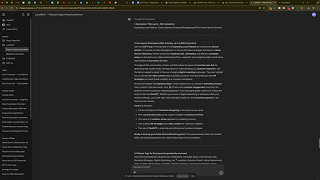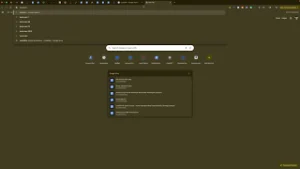Launching a podcast is an exciting endeavor that allows you to share your expertise, stories, and insights with a global audience. Buzzsprout is a user-friendly podcast hosting platform that simplifies the process of publishing and scheduling your podcast episodes, ensuring that your content reaches listeners seamlessly. Whether you’re a seasoned podcaster or just starting out, understanding the right way to publish and schedule your podcast on Buzzsprout can significantly enhance your podcasting experience and audience engagement. This comprehensive guide will walk you through the steps to publish and schedule your podcast effectively using Buzzsprout, ensuring a smooth and professional podcasting journey.
Why Use Buzzsprout for Podcast Publishing and Scheduling?
Buzzsprout stands out as a top choice for podcast hosting due to its intuitive interface, robust features, and excellent customer support. Here are some compelling reasons to choose Buzzsprout for your podcasting needs:
Benefits of Using Buzzsprout
- Ease of Use: Buzzsprout’s simple dashboard makes uploading, publishing, and managing episodes straightforward, even for beginners.
- Scheduling Flexibility: Plan and schedule your episodes in advance, ensuring consistent content delivery without the need for manual uploads.
- Comprehensive Analytics: Gain insights into your podcast’s performance with detailed analytics, helping you understand your audience and optimize your content.
- Wide Distribution: Automatically distribute your podcast to major platforms like Apple Podcasts, Spotify, Google Podcasts, and more, expanding your reach effortlessly.
- Professional Features: Utilize features like dynamic content insertion, transcription services, and customizable podcast players to enhance your podcast’s professionalism and accessibility.
Step-by-Step Guide to Publishing and Scheduling Your Podcast on Buzzsprout
Publishing and scheduling your podcast episodes on Buzzsprout involves a series of straightforward steps. Follow this guide to ensure that your podcast is published correctly and reaches your audience effectively.
Step 1: Sign Up and Set Up Your Buzzsprout Account
- Create an Account:
- Visit Buzzsprout and click on the Sign Up button.
- Enter your email address and choose a password, or sign up using your Google or Facebook account.
- Set Up Your Podcast:
- After signing up, you’ll be prompted to create a new podcast.
- Enter your podcast title, tagline, and select the appropriate category that best describes your podcast’s content.
- Upload your podcast cover art, ensuring it meets Buzzsprout’s recommended specifications for optimal display across platforms.
- Customize Podcast Settings:
- Configure your podcast’s language, region, and other relevant settings.
- Review Buzzsprout’s terms of service and privacy policy, then proceed to set up your account.
Step 2: Upload Your Podcast Episode
- Navigate to the Dashboard:
- Once your account is set up, you’ll be directed to your Buzzsprout dashboard.
- Click on the Upload an Episode button to begin the publishing process.
- Upload Your Audio File:
- Click on the Choose File button and select the audio file (MP3 or WAV) you wish to upload from your computer.
- Buzzsprout recommends uploading files with a bitrate of 128 kbps or higher for optimal audio quality.
- Enter Episode Details:
- Episode Title: Provide a clear and descriptive title for your episode.
- Episode Description: Write a detailed description that outlines the content of the episode, including any key points, guest information, or resources mentioned.
- Episode Number: Assign an episode number to help organize your podcast and make it easier for listeners to navigate.
- Add Episode Metadata:
- Publication Date: Set the date and time you want the episode to be published.
- Explicit Content: Indicate whether your episode contains explicit content, ensuring compliance with platform guidelines.
Step 3: Schedule Your Podcast Episode
- Set Publication Date:
- In the Publication Date section, choose the date and time you want your episode to go live.
- Scheduling episodes in advance helps maintain a consistent release schedule, which is crucial for building and retaining your audience.
- Enable Automatic Publication:
- Buzzsprout allows you to schedule episodes up to 90 days in advance.
- Enable the Automatic Publication feature to ensure your episode is published at the designated time without manual intervention.
- Review and Confirm:
- Double-check all the details you’ve entered to ensure accuracy.
- Click on the Schedule Episode button to finalize the scheduling process.
Step 4: Embed Your Podcast Episode on Your Website
Embedding your podcast episodes on your website can enhance engagement and provide an additional platform for your audience to listen to your content. Here’s how to embed a podcast episode using Buzzsprout:
- Access the Embed Code:
- In your Buzzsprout dashboard, navigate to the specific episode you want to embed.
- Click on the Embed button to generate the HTML code for the episode player.
- Copy the Embed Code:
- Buzzsprout will provide you with a customizable embed code.
- Click on the Copy button to copy the code to your clipboard.
- Add the Embed Code to Your Website:
- Log in to your website’s Content Management System (CMS) or access the website’s codebase directly.
- Navigate to the page or post where you want to display the podcast episode.
- If you’re using WordPress, click on the Add Block button and select Custom HTML.
- Paste the copied embed code into the HTML block.
- Click Preview to ensure the player appears correctly, then Publish or Update your page.
Step 5: Distribute Your Podcast to Major Platforms
Buzzsprout simplifies the distribution process by automatically submitting your podcast to major platforms. However, it’s good practice to verify the distribution settings:
- Check Distribution Settings:
- In your Buzzsprout dashboard, go to the Directories tab.
- Ensure that all desired platforms (e.g., Apple Podcasts, Spotify, Google Podcasts) are enabled for distribution.
- Manually Submit if Necessary:
- If a platform isn’t listed, you can manually submit your podcast RSS feed provided by Buzzsprout.
- Follow the submission guidelines of each platform to ensure your podcast is listed correctly.
Step 6: Monitor Your Podcast Performance
Keeping track of your podcast’s performance helps you understand your audience and optimize your content strategy.
- Access Analytics:
- In the Buzzsprout dashboard, navigate to the Stats tab.
- Review metrics such as downloads, listener locations, and device usage.
- Adjust Strategies:
- Use the insights gained from analytics to refine your podcast topics, publishing schedule, and marketing efforts.
Best Practices for Publishing and Scheduling Your Podcast on Buzzsprout
Implementing best practices ensures that your podcast is published smoothly and reaches your intended audience effectively.
Maintain a Consistent Release Schedule
- Why: Consistency helps build and retain your audience, as listeners know when to expect new episodes.
- How: Use Buzzsprout’s scheduling feature to plan and release episodes at regular intervals (e.g., weekly, bi-weekly).
Optimize Episode Titles and Descriptions
- Why: Clear and descriptive titles improve searchability and attract potential listeners.
- How: Include relevant keywords in your episode titles and write comprehensive descriptions that provide value and context.
Leverage Social Media and Marketing
- Why: Promoting your episodes on social media platforms increases visibility and attracts new listeners.
- How: Share embedded players, episode links, and highlight key points from your episodes across your social media channels.
Engage with Your Audience
- Why: Building a community around your podcast fosters loyalty and encourages word-of-mouth promotion.
- How: Encourage listeners to leave reviews, participate in discussions, and provide feedback to improve your content.
Utilize Buzzsprout’s Advanced Features
- Dynamic Content Insertion: Add special offers, ads, or announcements to your episodes without re-uploading them.
- Transcription Services: Improve accessibility and SEO by adding transcriptions of your episodes.
Common Mistakes to Avoid
Avoiding these common pitfalls can enhance the effectiveness of your podcast publishing and scheduling efforts.
Inconsistent Publishing Schedule
- Impact: Irregular releases can confuse listeners and lead to a loss of audience interest.
- Solution: Plan and schedule your episodes in advance using Buzzsprout’s scheduling tools to maintain consistency.
Poor Audio Quality
- Impact: Low-quality audio can deter listeners and reflect poorly on your professionalism.
- Solution: Invest in a good microphone, use soundproofing, and edit your episodes to ensure clear and crisp audio.
Neglecting SEO Optimization
- Impact: Without proper SEO, your podcast may not reach its full potential audience.
- Solution: Optimize your episode titles, descriptions, and transcripts with relevant keywords to improve search engine visibility.
Overlooking Audience Engagement
- Impact: Failing to engage with your audience can result in lower listener retention and limited growth.
- Solution: Actively interact with your listeners through social media, emails, and by incorporating their feedback into your episodes.
Ignoring Analytics
- Impact: Not monitoring your podcast’s performance can lead to missed opportunities for improvement and growth.
- Solution: Regularly review Buzzsprout’s analytics to understand your audience better and refine your content strategy accordingly.
Frequently Asked Questions
Can I Schedule Multiple Episodes at Once on Buzzsprout?
Yes, Buzzsprout allows you to schedule multiple episodes in advance. This feature is particularly useful for maintaining a consistent release schedule and managing your podcast efficiently.
How Do I Change the Publication Date of a Scheduled Episode?
To change the publication date:
- Navigate to the Episodes tab in your Buzzsprout dashboard.
- Click on the episode you want to reschedule.
- Edit the Publication Date and time.
- Save the changes to update the schedule.
Is It Possible to Automatically Publish Episodes as Soon as They’re Uploaded?
Yes, when uploading an episode, you can choose to Publish Immediately or Schedule it for a later date. Selecting Publish Immediately will make the episode live as soon as the upload completes.
Can I Track the Performance of Specific Episodes?
Absolutely. Buzzsprout’s analytics provide detailed insights into each episode’s performance, including download counts, listener locations, and device usage. Use this data to understand what resonates with your audience and tailor future content accordingly.
Do I Need Technical Skills to Use Buzzsprout?
No, Buzzsprout is designed to be user-friendly, catering to podcasters of all technical levels. Its intuitive interface simplifies the process of uploading, scheduling, and managing your podcast episodes.
Maximizing the Impact of Your Podcast on Buzzsprout
To fully leverage the benefits of publishing and scheduling your podcast on Buzzsprout, integrate these strategies into your broader podcasting and marketing efforts.
Align with Your Marketing Goals
- Define Objectives: Clearly outline what you want to achieve with your podcast, such as brand awareness, lead generation, or establishing authority in your niche.
- Tailor Content: Ensure your podcast content aligns with your marketing goals and resonates with your target audience.
Use Data to Optimize Strategies
- Analyze Listener Data: Utilize Buzzsprout’s analytics to gain insights into listener demographics and preferences.
- Refine Content: Use data-driven insights to refine your podcast topics, episode formats, and release schedules for better engagement.
Integrate with Other Marketing Tools
- Connect with CRM Systems: Integrate your podcast with Customer Relationship Management (CRM) tools to streamline lead management and track interactions.
- Leverage Email Marketing: Use email marketing to promote your episodes and engage with your subscribers effectively.
Foster Team Collaboration
- Share Responsibilities: Delegate tasks such as editing, marketing, and episode planning to team members to enhance productivity and creativity.
- Regular Meetings: Hold regular team meetings to discuss podcast progress, analyze performance data, and brainstorm new ideas.
Enhance Customer Experience
- Provide Value: Focus on delivering valuable and engaging content that addresses your audience’s needs and interests.
- Engage with Listeners: Encourage listener interaction through Q&A sessions, feedback requests, and by addressing their comments in your episodes.
Conclusion
Publishing and scheduling your podcast on Buzzsprout the right way is a strategic approach that can significantly enhance your podcast’s reach, engagement, and overall success. By following this step-by-step guide, implementing best practices, and avoiding common mistakes, you can ensure a seamless podcasting experience that resonates with your audience and supports your business goals. Embrace the tools and features Buzzsprout offers to optimize your podcasting efforts, and watch your podcast thrive in the competitive digital landscape.




